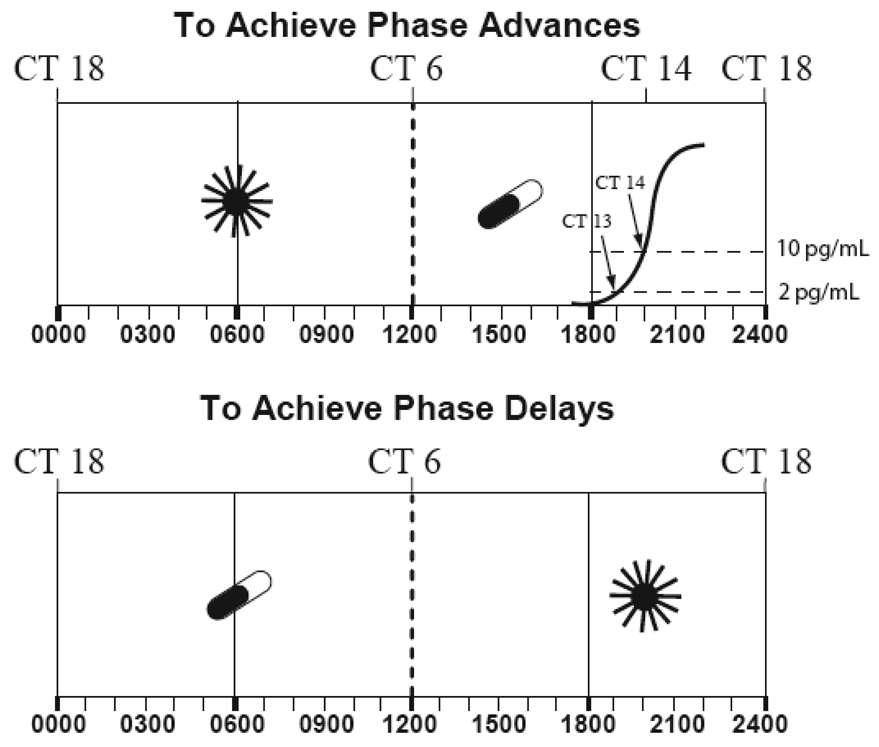Figure 3.
The optimal times to schedule bright light exposure and low-dose melatonin administration to cause circadian phase shifts are based on their respective phase response curves (PRCs) which are about 12 hours out of phase with each other. The 10 pg/ml plasma (3 pg/ml saliva) melatonin onset marking circadian time (CT) 14, can be used to indicate when advance and delay responses occur, in order to maximize phase shifts. The crossover times are eight hours before (circadian time 6), and four hours after (circadian time 18), the melatonin onset. Also indicated are clock times typical for individuals who awaken at 6 a.m. (0600). Optimally, exogenous melatonin should overlap with either the onset or the offset of the endogenous melatonin profile. High doses (greater than about 5 mg) may be less effective than lower doses, because of spillover onto the wrong zone of the melatonin phase response curve. The crossover times for the light PRC are based on the one published by Czeisler and co-workers [75] in the Johnson Atlas of PRCs [76]; the optimal light times for scheduling light are based on earlier work [26] and the melatonin crossover and optimal scheduling times are based on the melatonin PRC [49,39]. Adapted from [62] with permission.

